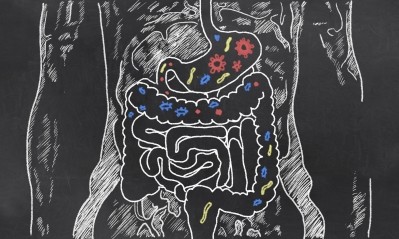Next gen probiotics? Nestle’s latest study finds novel B. longum bacteria in infants in weaning period

The company believes that this finding could aid in the development of next generation nutritional solutions and probiotics to support kids’ growth.
Published in Cell, the study conducted on Bangladeshi infants showed three distinct groups of Bifidobacterium longum (B. longum) thriving in their gut as they transit from breastfeeding to eating complementary foods – also known as the weaning period. This period of transition is important as it shapes the infant gut microbiome towards a mature adult state.
The novel strains are said to be distinct from the other B. longum strains, including B. longum infantis that is predominant during early infancy and exclusive breastfeeding.
These novel strains may “constitute a novel subspecies”, Nestle highlighted, adding that further research was ongoing.
Conducted by researchers from institutions across the world, including the Broad Institute of MIT and Harvard, University of Helsinki, University of Auckland, University of Bologna, the International Centre for Diarrhoeal Disease Research, Bangladesh (icddr,b), the study analysed the faecal microbiome and metabolome of 222 young kids during their first two years of life.
Findings showed that three novel groups of B. longum had expanded with the introduction of solid foods.
The three groups roughly corresponded to B. longum sub-species longum, sub-species suis/suillum – also termed as transitional B. longum in the study, and sub-species infantis, based on their similarities with existing reference genomes.
“We found that Bifidobacteria dominated in early life followed by abundant Prevotella spp.
“We identified a distinct clade in B. longum which expanded upon introduction of solid foods combined with continued breastfeeding.
“The clades followed a temporal succession pattern where B. longum subsp. infantis dominance in early infancy was followed by expansion of transitional B. longum at introduction of solid foods and B. longum subsp. longum abundance increased during the second year of life,” the researchers said.
The three groups also appeared to have the capacity to utilise both human milk and solid food as its energy source.
While the three groups are prominently present in infants in Bangladesh, they are present overseas at a lower prevalence.
Following the findings, Nestle believes that this could lead to the development of the next-generation nutritional products.
"This discovery opens new possibilities for developing the next-generation of nutritional solutions that can help to maintain or restore a diverse and fully functional gut microbiome in infants.
"This can be obtained either through boosting beneficial gut microbes by feeding them with optimal nutrients or by supplementing with probiotics. This is especially important for the weaning phase, as no specific solutions exist, and this is a key period for shaping the gut ecosystem and immune health, with potential long-term impact," said Isabelle Bureau-Franz, Head of Nestle Research.
The company also believes that microbiota-directed complementary food could be used on impaired gut microbiome for improved growth and neurodevelopment in children.
Association with metabolites
The study also showed that the novel B. longum groups were linked to the production of different metabolites.
For instance, there were positive associations between B. longum subsp. infantis, the metabolite indolelactate, as well as the enzyme N-acetylglutamate.
Indolelactate is an aromatic lactic acid produced by some Bifidobacterium species in the infant gut.
On the other hand, transitional B. longum was strongly associated with the metabolite pipecolic acid.
Health outcomes
The novel B. longum groups and their metabolites were also found to be associated with early growth and the severity of childhood diarrhoea.
For instance, B. longum subsp. infantis and its associated metabolites, such as indolelactate, were positively correlated with two measures of growth, namely weight-for-length and weight-for age.
On the other hand, B. longum subsp. longum and transitional B. longum were inversely associated with the severity of diarrhoea.
Source: Cell
A distinct clade of Bifidobacterium longum in the gut of Bangladeshi children thrives during weaning
https://doi.org/10.1016/j.cell.2022.10.011
Authors: Tommi Vatanen et al












